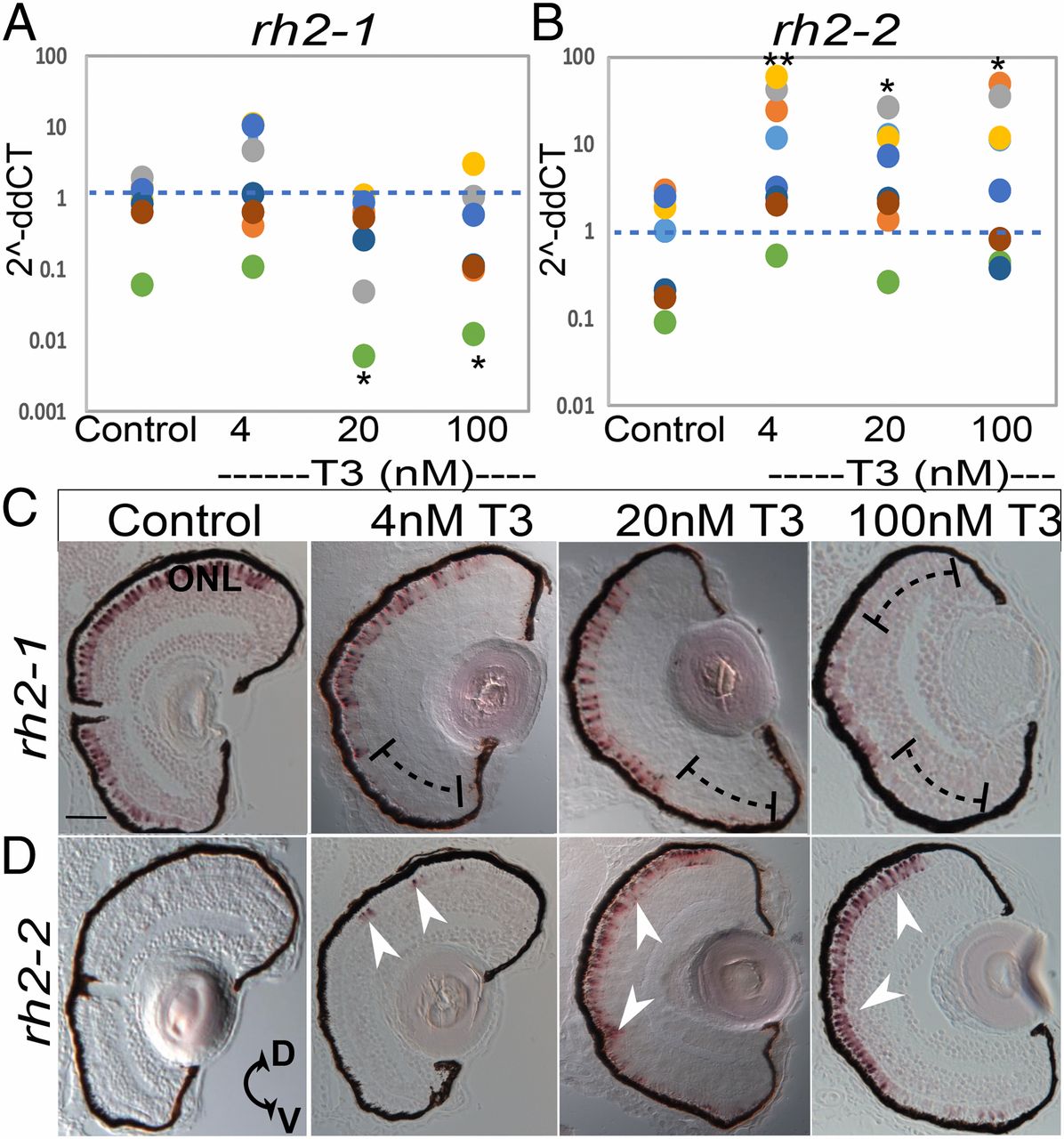Fig. 7 qPCR and in situ hybridization for rh2-1 and rh2-2 gene expression reveals differential regulation after TH (T3) treatment from 2 to 4 dpf. (A and B) Scatter plots indicate fold-change abundance (2−ddCT) of the indicated transcripts. Colors of dots correspond to separate experiments. Each dot represents 1 biological replicate (pooled RNA from ∼5 larvae). rh2-1 abundance (A) in DMSO control (n = 7), is unchanged by 4 nM T3 (n = 7) P = 0.53, decreased by 20 nM T3 (n = 7) P = 0.0186, and decreased by 100 nM T3 (n = 7) P = 0.0259. rh2-2 abundance (B) in control (n = 7), is increased by 4 nM T3 (n = 7) P = 0.0043, increased by 20 nM T3 (n = 7) P = 0.037 and increased by 100 nM T3 (n = 7) P = 0.026. P values were calculated by comparing the ddCT values for treated vs. control from each experiment using the Kruskal–Wallis test and the Conover post hoc test further adjusted by the Benjamini–Hochberg false-discovery rate method. Statistical notation: *P < 0.05, **P < 0.01. (C and D) In situ hybridization of cryosectioned eyes using gene specific probes for rh2-1 (C) and rh2-2 (D) from larvae treated 2 to 4 dpf with DMSO (control) or T3. Brackets in C indicate regions showing reduced expression domain of rh2-1 due to T3 treatment; arrowheads in D indicate regions showing induced and expanded expression domain of rh2-2 due to T3 treatment. D, dorsal; V, ventral. (Scale bar, 50 μm.)
Image
Figure Caption
Acknowledgments
This image is the copyrighted work of the attributed author or publisher, and
ZFIN has permission only to display this image to its users.
Additional permissions should be obtained from the applicable author or publisher of the image.
Full text @ Proc. Natl. Acad. Sci. USA

